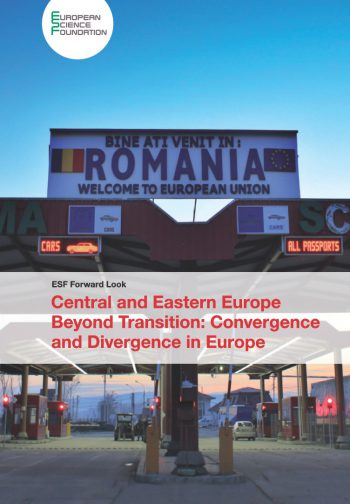Scenarios for Central and Eastern Europe against the Backdrop of Economic Recovery and European Integration
in: Central and Eastern Europe Beyond Transition: Convergence and Divergence in Europe, ed. by European Science Foundation, Strasbourg: European Science Foundation 2012, 23-34 (Co-author: V. Pettai)
 Scholars of post-communist change in Central and Eastern Europe have continually faced an analytical challenge as to whether to stress convergence or divergence when interpreting social, economic and political transformation in the region. Across many systemic categories, the imperative has been to highlight patterns of convergence. All the countries of the region were encouraged to build democratic institutions, develop market economies and rebuild social cohesion. And indeed within a few short years a number of indicators across these domains showed signs of approximation with Western European levels. Free market exchange became well established, democracy was nearing consolidation, and social decline appeared at least arrested.
Scholars of post-communist change in Central and Eastern Europe have continually faced an analytical challenge as to whether to stress convergence or divergence when interpreting social, economic and political transformation in the region. Across many systemic categories, the imperative has been to highlight patterns of convergence. All the countries of the region were encouraged to build democratic institutions, develop market economies and rebuild social cohesion. And indeed within a few short years a number of indicators across these domains showed signs of approximation with Western European levels. Free market exchange became well established, democracy was nearing consolidation, and social decline appeared at least arrested.
Yet divergence also seemed a compelling analytical framework, since the decades of not only communist rule, but also delayed development vis-à-vis the West appeared to consign these countries to perhaps an equally long period of painful catching-up, if not stunted development. Politics would need years before relevant socio-economic cleavages could emerge that might undergird a stable party system. And although aggregate social welfare was perhaps no longer declining, social inequalities were rapidly increasing, generating relative deprivation effects.
Moreover, the convergence/divergence question had two levels to it. Not only was it important to understand processes of approximating Western Europe, it was equally a question of whether the Central and Eastern Europe countries weren’t themselves diverging from each other through qualitatively different policy choices or at least showing strikingly different rates of change. Indeed, a paradox soon emerged that the countries in the region could well be converging with a number of important aggregate Western European indicators, while at the same time diverging in terms of the policy combinations or institutions they may have chosen to achieve these goals. Overall, social science’s understanding of post-communist transformation has become increasingly multi-level and multi-dimensional.
This section of the final report will therefore adopt this important point of departure by arguing that future scenarios in relation to change in Central and Eastern Europe will be a factor of not only continuing integration with Western Europe, but also variation in the economic, political and social structures these societies have already developed. Both convergence and divergence in terms of developmental paths since 1989 will serve as scope conditions influencing the possible patterns of change in the future. We will observe that across economic, political and social structures in the region both similarities and differences exist, which together must be factored into any scenario analysis.
Download full report: ESF_BeyondTransition